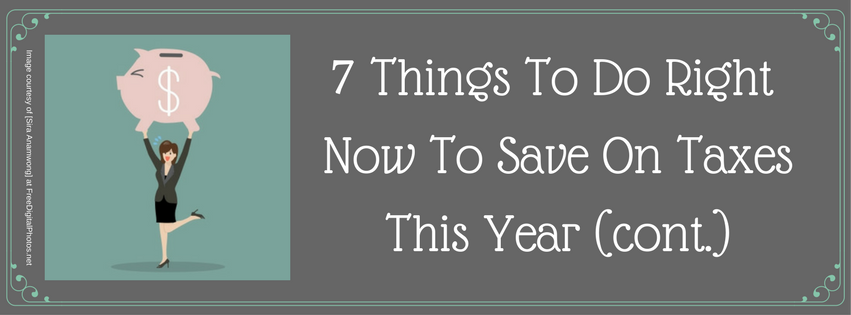In our preceding blog post, we discussed an article on what things you can start doing right now to save on taxes this year. Starting from reviewing your previous tax return to funding your health savings account, you can review the information we covered here: (http://bit.ly/2skq8IO). Today’s post will talk about how you can save more money for by making changes to your W-4, reviewing your estimate payments, and making an appointment with your tax professional.
5. Make Changes To Your W-4 Or Consider Changing Your Withholding. The form W-4 is the form that you complete and give to your employer – not the IRS – so that your employer can figure how much federal income tax to withhold from your pay. You typically fill out a form W-4 when you start a new job or at the beginning of the year. Generally, the more allowances you claim on your W-4, the less federal income tax your employer will withhold from your paycheck (the bigger your take home pay) while the fewer allowances you claim, the more federal income tax your employer will withhold from your paycheck (the smaller your take home pay). You want to get this number right since if you owe too much at tax time, you could be subject to an underpayment penalty.
(For more on making changes to your W-4, check out this prior article.)
6. Review Your Estimated Payments. If you receive payments or other money throughout the year without having any federal income taxes withheld, you should consider making estimated payments. If you are filing as an individual taxpayer, you generally have to make estimated tax payments if you expect to owe tax of $1,000 or more when you file your federal income tax return. This rule applies not only to the self-employed or occasional freelancers but also to those taxpayers who may receive income from other sources not subject to withholding; these tend to be landlords, S corporation shareholders, partners in a partnership or taxpayers with significant investments. To make estimated payments, you’ll figure your estimated tax; you can use the worksheet on the federal form 1040-ES (downloads as a PDF) to figure your estimated tax. For estimated tax purposes, the year is divided into four payment periods, about once every quarter. Each period has a specific payment due date as determined by IRS (usually April 15, June 15, September 15 and January 15). Watch the dates carefully: if you don’t pay on time, you may be subject to a penalty.
7. Make An Appointment To See Your Tax Professional. Believe it or not, not all tax professionals close up shop once Tax Day passes: there is work to be done all year long. That said, many tax professionals have a bit of lull in June and July (things often pick up closer to the date that extended returns are due) which makes it a good time to make an appointment. If you manage a small business or run your own show, you should likely be meeting with your tax professional quarterly – just to make sure that you’re on top of things. Most individual taxpayers who don’t run a business find that a quick check-up once a year works out just fine to make sure that you won’t encounter any nasty surprises at year-end: a tax professional can also help you determine whether you need to make a change in your withholding or pay more (or less) in estimated payments. Don’t assume that hiring a good tax pro will be complicated or expensive. Pricing is important but don’t hire just on cost: ask questions and get a referral from a friend. Another plus? Fees for tax advice are generally deductible.
Kelly Phillips attended law school and interned at the estates attorney division of the IRS. She has written many tax-related articles and two books while also she running her own website Taxgirl.com. She currently is working full time as a Senior Editor for Forbes.com.
